Hi everyone!
It’s great to be back again writing on this blog. When I came back home from this past summer’s trip, I never expected to keep writing on Saving the Shtetlach. After two crazy months of travelling through Poland, Belarus, and Lithuania, I thought the journey was over. I was ready to stay in America for good. But... I guess my itch to stay in the USA didn’t last too long.
I recently returned from most amazing spring break trip to Vienna, Austria. I went on the trip with nine students from Baltimore Hillel and the trip was very special. The focus of the trip was to introduce students to Jewish culture in Vienna; exposing us to Vienna’s past, present, and future as a center for Jewish life.
Now before I start explaining my own experience, you’re probably wondering why my group’s leader Sam chose to lead a Jewish trip in Vienna. To most, Vienna doesn't appear as the most “Jewish” city – with a current Jewish population of only 8,000 it makes sense. But trust me when I say that Vienna was the perfect place to pick for this trip. The amount of Jewish history in Vienna is incredible. Just think – Sigmund Freud, Theodor Herzl, Gustav Mahler, Viktor Frankl – just a few names of famous Jews from Vienna. Not just that, but the Jewish population that lives there today is very active and despite their numbers, they make themselves very important to the city. I learned so much when I was in Vienna and couldn’t imagine spending my break in any other place.
It’s great to be back again writing on this blog. When I came back home from this past summer’s trip, I never expected to keep writing on Saving the Shtetlach. After two crazy months of travelling through Poland, Belarus, and Lithuania, I thought the journey was over. I was ready to stay in America for good. But... I guess my itch to stay in the USA didn’t last too long.
I recently returned from most amazing spring break trip to Vienna, Austria. I went on the trip with nine students from Baltimore Hillel and the trip was very special. The focus of the trip was to introduce students to Jewish culture in Vienna; exposing us to Vienna’s past, present, and future as a center for Jewish life.
Now before I start explaining my own experience, you’re probably wondering why my group’s leader Sam chose to lead a Jewish trip in Vienna. To most, Vienna doesn't appear as the most “Jewish” city – with a current Jewish population of only 8,000 it makes sense. But trust me when I say that Vienna was the perfect place to pick for this trip. The amount of Jewish history in Vienna is incredible. Just think – Sigmund Freud, Theodor Herzl, Gustav Mahler, Viktor Frankl – just a few names of famous Jews from Vienna. Not just that, but the Jewish population that lives there today is very active and despite their numbers, they make themselves very important to the city. I learned so much when I was in Vienna and couldn’t imagine spending my break in any other place.
Our group stayed in Vienna for ten days. The location of our hotel, which was right in the second district of Vienna, stands in what is considered the Jewish neighborhood of Vienna. Before the Holocaust, over 200,000 Jewish people lived in Vienna – making up nearly 10 percent of the city’s population. Most of these Jews lived in the neighborhood of the second district; in Yiddish they called their home “Leopoldstadt.” Vienna was regarded a progressive city in the nineteenth and twentieth century; it was part of the former Habsburg Empire. Jews flocked over from the Russian Pale of Settlement in the second half of the 1800s, moving westward to cities like Vienna. Many people called this Jewish neighborhood “Mazzesinsel” - The Island of Matzot (get it, Passover reference!).
During the destruction of Kristallnacht in November 1938, most of the Jewish homes, businesses, and synagogues were destroyed in Vienna. The Jews in the city suffered greatly during the Second World War. Over 50,000 Viennese Jews were killed in the Holocaust. Very few were able to escape this dark fate as Hitler spread his anti-Semetic rhetoric all over the country.
Learning about this history as I walked through the second district was very eye opening. Our group took a tour of the district with a guide from the organization “Stone’s of Remembrance.” As we walked, the guide pointed out little plaques on the pavement serving as memorials for Jewish people who were killed in the war. The stones were placed right in front the homes where Jewish people used to live, making the memorial even more powerful.
Today, Leopoldstadt is still considered a Jewish neighborhood, with several kosher restaurants, shops, and even a kosher butcher. Our group visited the Kosher butcher and although I eat meat, after seeing it before it was cooked, I can see why most of my family has gone vegetarian. It wasn’t the prettiest site.
During the destruction of Kristallnacht in November 1938, most of the Jewish homes, businesses, and synagogues were destroyed in Vienna. The Jews in the city suffered greatly during the Second World War. Over 50,000 Viennese Jews were killed in the Holocaust. Very few were able to escape this dark fate as Hitler spread his anti-Semetic rhetoric all over the country.
Learning about this history as I walked through the second district was very eye opening. Our group took a tour of the district with a guide from the organization “Stone’s of Remembrance.” As we walked, the guide pointed out little plaques on the pavement serving as memorials for Jewish people who were killed in the war. The stones were placed right in front the homes where Jewish people used to live, making the memorial even more powerful.
Today, Leopoldstadt is still considered a Jewish neighborhood, with several kosher restaurants, shops, and even a kosher butcher. Our group visited the Kosher butcher and although I eat meat, after seeing it before it was cooked, I can see why most of my family has gone vegetarian. It wasn’t the prettiest site.
Our trip in Vienna began on Friday, which in the Jewish calendar is the start of Shabbat. A little disclaimer, I believe everyone on our trip grew to appreciate Shabbat a lot more when we were in Vienna. Now that we’re back in America, we all text each other reminding how many days left are till Shabbos. It’s our favorite day of the week.
Anyways, Shabbat was a very special holiday on our trip and we were lucky enough to spend TWO Shabbats in Vienna.
On Friday evening, our group walked over the Danube Canal to the first district Vienna which now houses the only Synagogue that survived the Second World War. When I walked inside the synagogue I immediately felt like I was in a special place. The synagogue is called Stadttempel “City Temple” and it is absolutely gorgeous. The prayer chapel was stunning with an arched, light blue ceiling adorned with golden stars. Since it was an orthodox shul, the women sat on the top floor and the men sat on the ground level. There were golden pillars that connected the two floors and I always remember sitting at the service which was like sitting at a concert. I loved looking downwards at the choir of young men singing on the Bema, the cantor leading them, and the Rabbi watching poised from the side. The Rabbi of the Stadttempel is Paul Chaim Eisenberg who is also the Chief Rabbi of Vienna. We had a few chances to speak with him and he was very nice to us, wishing us a good stay in the city.
Anyways, Shabbat was a very special holiday on our trip and we were lucky enough to spend TWO Shabbats in Vienna.
On Friday evening, our group walked over the Danube Canal to the first district Vienna which now houses the only Synagogue that survived the Second World War. When I walked inside the synagogue I immediately felt like I was in a special place. The synagogue is called Stadttempel “City Temple” and it is absolutely gorgeous. The prayer chapel was stunning with an arched, light blue ceiling adorned with golden stars. Since it was an orthodox shul, the women sat on the top floor and the men sat on the ground level. There were golden pillars that connected the two floors and I always remember sitting at the service which was like sitting at a concert. I loved looking downwards at the choir of young men singing on the Bema, the cantor leading them, and the Rabbi watching poised from the side. The Rabbi of the Stadttempel is Paul Chaim Eisenberg who is also the Chief Rabbi of Vienna. We had a few chances to speak with him and he was very nice to us, wishing us a good stay in the city.
Highlights for me were the several Shabbat dinners and lunches we went to, hosted by different Jewish families in the community. I dined at three different family’s houses over my trip and each one was a unique experience. All of the couples practiced an Orthodox style of Judaism, and I had interesting conversations with them. I learned about their Jewish customs and in the process, explained to them some of my own. As a Jewish woman who is on the border between identifying as a Reform and Conservative Jew, I learned that one of the best ways to learn about your Jewish identity is by discussing it. I discussed my beliefs with the men and women who hosted me and through interesting conversations, I felt like I gained a deeper understanding of myself and what I, as a Jewish person, stand for. It was fascinating to hear so many different opinions and beliefs about Judaism.
On another note, our group celebrated the Jewish holiday Purim while we were in Vienna. We realized that Viennese Jews certainly know how to party; we were even able to attend a few of them! I got the chance to meet up with my friend Nino during one of our Purim parties. I became friends Nino this past summer while we were both students at the Vilnius Yiddish Institute in Lithuania. When program ended, I never thought I would have the chance to see him again because he was a student in Vienna and I studied in Baltimore. Luckily, this trip happened and I was able to see my good friend again. Catching up with Nino was certainly a highlight of the trip for me. It reminded me of how special international friendships are; it makes travelling all the more fun. I felt like I learned a lot from Nino by visiting him in his own city. We talked all about his daily life in Vienna, his opinions on the city and its politics, and we discussed our shared interest in its Jewish history. He even gave me a city tour one morning which was very fun.
On another note, our group celebrated the Jewish holiday Purim while we were in Vienna. We realized that Viennese Jews certainly know how to party; we were even able to attend a few of them! I got the chance to meet up with my friend Nino during one of our Purim parties. I became friends Nino this past summer while we were both students at the Vilnius Yiddish Institute in Lithuania. When program ended, I never thought I would have the chance to see him again because he was a student in Vienna and I studied in Baltimore. Luckily, this trip happened and I was able to see my good friend again. Catching up with Nino was certainly a highlight of the trip for me. It reminded me of how special international friendships are; it makes travelling all the more fun. I felt like I learned a lot from Nino by visiting him in his own city. We talked all about his daily life in Vienna, his opinions on the city and its politics, and we discussed our shared interest in its Jewish history. He even gave me a city tour one morning which was very fun.
Now next comes, for me, one of the greatest highlights on the trip. This moment that I’m about to explain was special to me for several reasons. First was that I had the opportunity to utilize my Yiddish language training. Second, but even more significant, was that I was able to help connect distant relatives, relatives that didn’t even know they were family!
In the middle of our weeklong stay in Vienna, after finishing our tour at the amazing Jewish Museum of Vienna, my friend Noah asked me if I’d help him find the address of a shoe store in Vienna. Before coming on the trip, Noah received an the news that he had a distant cousin named Andre who lived in Vienna. Noah received his cousin’s business address and was determined to find the store. I was happy to come along for the ride; Noah knew I had interest in Jewish history and genealogy, plus my Yiddish skills would come in handy (Yiddish is very similar sounding to German!). Thus, together we set out to find Andre’s shoe store.
Luckily, without getting very lost, we found the store. It was a very trendy shoe shop, with English music playing, and when we walked inside the ladies at the front desk asked us if we needed any help. We told them we were looking for the owner of the store, a man named Andre, and they gave us a weird look. They said to us that Andre was in Munich at the time and not around to speak to us. “Oh," Noah said. “We’re family.”
After that, to our surprise, the ladies walked us to the back of the store into a tiny room. Sitting at desk was a little, old man who looked up at us, wondering why we were in his office. His workers explained to him that Noah was a cousin of Andre’s and the man smiled. “I am Andre’s uncle!” he said.
It was a really a special moment to watch as Noah and his cousin, who we learned was named Milo, connected for the very first time. Part of the way through the conversation, Milo paused because he was having a very hard time explaining something to Noah in English. He had mentioned earlier that he was from Poland, so I asked him if he spoke Yiddish.
When I said this to Milo, his eyes lit up, “Of course I speak Yiddish!” he said. From then on he spoke to me in Yiddish and I did my best to translate his words to English for Noah. I’m sure Milo never expected to meet some twenty year old American girl who was learning Yiddish, and I was so happy to help him communicate in a language he was comfortable speaking. Moments like that remind why I study Yiddish and all the fulfilling things in my life that have come from it.
In the middle of our weeklong stay in Vienna, after finishing our tour at the amazing Jewish Museum of Vienna, my friend Noah asked me if I’d help him find the address of a shoe store in Vienna. Before coming on the trip, Noah received an the news that he had a distant cousin named Andre who lived in Vienna. Noah received his cousin’s business address and was determined to find the store. I was happy to come along for the ride; Noah knew I had interest in Jewish history and genealogy, plus my Yiddish skills would come in handy (Yiddish is very similar sounding to German!). Thus, together we set out to find Andre’s shoe store.
Luckily, without getting very lost, we found the store. It was a very trendy shoe shop, with English music playing, and when we walked inside the ladies at the front desk asked us if we needed any help. We told them we were looking for the owner of the store, a man named Andre, and they gave us a weird look. They said to us that Andre was in Munich at the time and not around to speak to us. “Oh," Noah said. “We’re family.”
After that, to our surprise, the ladies walked us to the back of the store into a tiny room. Sitting at desk was a little, old man who looked up at us, wondering why we were in his office. His workers explained to him that Noah was a cousin of Andre’s and the man smiled. “I am Andre’s uncle!” he said.
It was a really a special moment to watch as Noah and his cousin, who we learned was named Milo, connected for the very first time. Part of the way through the conversation, Milo paused because he was having a very hard time explaining something to Noah in English. He had mentioned earlier that he was from Poland, so I asked him if he spoke Yiddish.
When I said this to Milo, his eyes lit up, “Of course I speak Yiddish!” he said. From then on he spoke to me in Yiddish and I did my best to translate his words to English for Noah. I’m sure Milo never expected to meet some twenty year old American girl who was learning Yiddish, and I was so happy to help him communicate in a language he was comfortable speaking. Moments like that remind why I study Yiddish and all the fulfilling things in my life that have come from it.
We chatted with Milo for a bit and he told us that Andre would be back later in the week so we would get to meet him. We returned to the shoe store one more time to meet Andre and we went out to coffee with him which was also very nice. It was awesome to watch family connect. Noah was so thrilled to find relatives in Vienna, and I was happy because I could help in the process.
Being in Vienna, we were constantly reminded of the history of the Jews that lived there in years past. A day that reminded of how fortunate we are to be alive was the day our group visited Mauthausen Concentration Camp. Our trip to Mauthausen was extremely powerful. It was a two hour drive to the concentration camp, located just outside a small town in Austria. When we walked out of our bus and began the tour, the rain started to pour down and the wind whipped our faces. The tour guide explained to us all of the different ways people were forced to suffer at this camp, from brutal labor to the crematories. The weather set the mood for our visit and we were definitely all affected.
It's really hard for me to explain this visit to the concentration camp. I will say that this visit only went to further prove how inhumane genocide is; how inhumane forced human suffering is. I felt a heavy sense of sadness as I walked through the camp. I had the comforting support of my group members. We stuck together as we explored the place that tried to exterminate so many of our people.
At the end of our tour of Mauthausen, our group lit a candle and placed it next to the Jewish memorial. We recited the Mourners Kadish and each of us placed a stone on the memorial to honor the memory of those who perished.
Being in Vienna, we were constantly reminded of the history of the Jews that lived there in years past. A day that reminded of how fortunate we are to be alive was the day our group visited Mauthausen Concentration Camp. Our trip to Mauthausen was extremely powerful. It was a two hour drive to the concentration camp, located just outside a small town in Austria. When we walked out of our bus and began the tour, the rain started to pour down and the wind whipped our faces. The tour guide explained to us all of the different ways people were forced to suffer at this camp, from brutal labor to the crematories. The weather set the mood for our visit and we were definitely all affected.
It's really hard for me to explain this visit to the concentration camp. I will say that this visit only went to further prove how inhumane genocide is; how inhumane forced human suffering is. I felt a heavy sense of sadness as I walked through the camp. I had the comforting support of my group members. We stuck together as we explored the place that tried to exterminate so many of our people.
At the end of our tour of Mauthausen, our group lit a candle and placed it next to the Jewish memorial. We recited the Mourners Kadish and each of us placed a stone on the memorial to honor the memory of those who perished.
Visiting Mauthausen was tough but it was important for all of us on the trip to see. Afterwards, our group had dinner back in Vienna and enjoyed a night singing Karaoke at a local bar. I discovered that singing in public isn’t so scary – especially when you have an awesome duet partner like my friend Ben who I became friends with on the trip. We sang songs like “Ho Hey” and “I’m Yours” and it was super fun.
Now, I apologize for the extremely long length of this blog post, I know that most of my previous blogs are shorter than this. It’s hard to explain everything I’ve learned in one blog entry, I still feel like I’m leaving out some of the awesome things we did. But overall this trip was extremely fun and eye-opening.
First off, I never realized the wonders one can find in a city like Vienna. I had the opportunity to visit some beautiful palaces and museums over this trip. Literally every street in Vienna was gorgeous, with its Baroque architecture and unique styles. I had a blast trying new foods like Bratwurst and Viennese cake. I saw the most stunning national library, a beautiful Opera House, and several gorgeous parks. I got to meet Holocaust survivors, famous journalists, and government workers like Hannah Lessing who to me is such a role model (be sure to look her up!). Lastly, I ate the best Friday night and Saturday morning meals I’ll ever eat in my whole life and experienced Judaism in a way I never knew.
Now, I apologize for the extremely long length of this blog post, I know that most of my previous blogs are shorter than this. It’s hard to explain everything I’ve learned in one blog entry, I still feel like I’m leaving out some of the awesome things we did. But overall this trip was extremely fun and eye-opening.
First off, I never realized the wonders one can find in a city like Vienna. I had the opportunity to visit some beautiful palaces and museums over this trip. Literally every street in Vienna was gorgeous, with its Baroque architecture and unique styles. I had a blast trying new foods like Bratwurst and Viennese cake. I saw the most stunning national library, a beautiful Opera House, and several gorgeous parks. I got to meet Holocaust survivors, famous journalists, and government workers like Hannah Lessing who to me is such a role model (be sure to look her up!). Lastly, I ate the best Friday night and Saturday morning meals I’ll ever eat in my whole life and experienced Judaism in a way I never knew.
I feel very lucky that I was able to go on this trip to Vienna. I got to make new friends that I hope to keep in touch with and look forward to seeing around campus and at Hillel. Even more, I saw Vienna through a lens that is very close to my heart – the Jewish lens, and seeing it through that perspective made it all the more powerful.
For perspective travelers, Vienna is the place to be (it’s ranked the safest city in the world!) and I promise the experience one has there is unforgettable. It’s one of my favorite cities now and I hope to return one day.
As always, thank you so much for reading. I hope you enjoyed Saving the Shtetlach in its new revamped state. I’m not going to give everything away, but I don’t believe that this will be my last post on this blog. Who knows? There may be some more adventures to come.
As we say in Yiddish, “Ah dank oon zayt gezunt” – Thank you and be well.
Until next time,
Arielle
For perspective travelers, Vienna is the place to be (it’s ranked the safest city in the world!) and I promise the experience one has there is unforgettable. It’s one of my favorite cities now and I hope to return one day.
As always, thank you so much for reading. I hope you enjoyed Saving the Shtetlach in its new revamped state. I’m not going to give everything away, but I don’t believe that this will be my last post on this blog. Who knows? There may be some more adventures to come.
As we say in Yiddish, “Ah dank oon zayt gezunt” – Thank you and be well.
Until next time,
Arielle
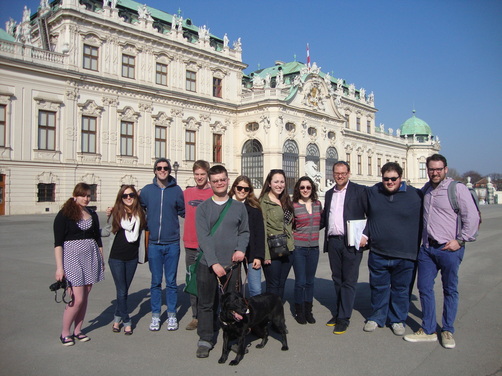
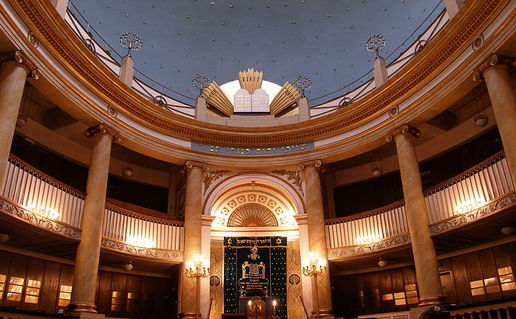
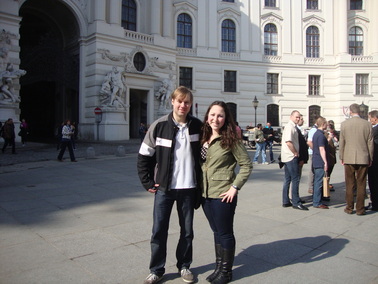
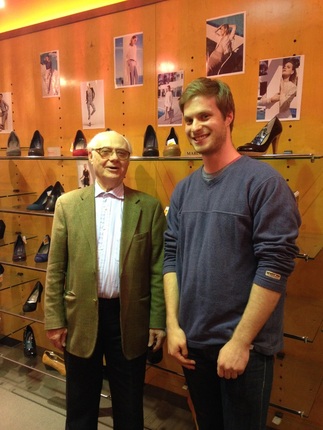
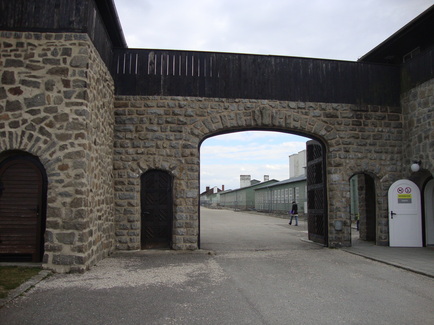
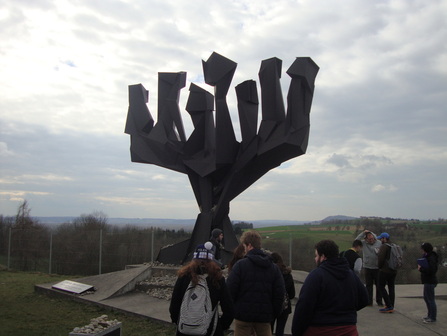
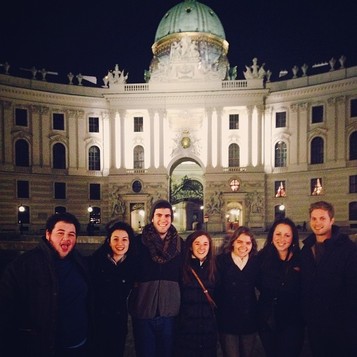
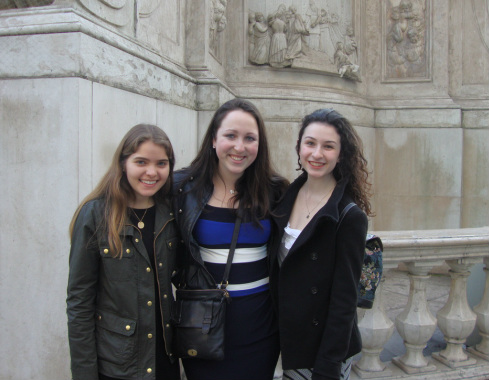
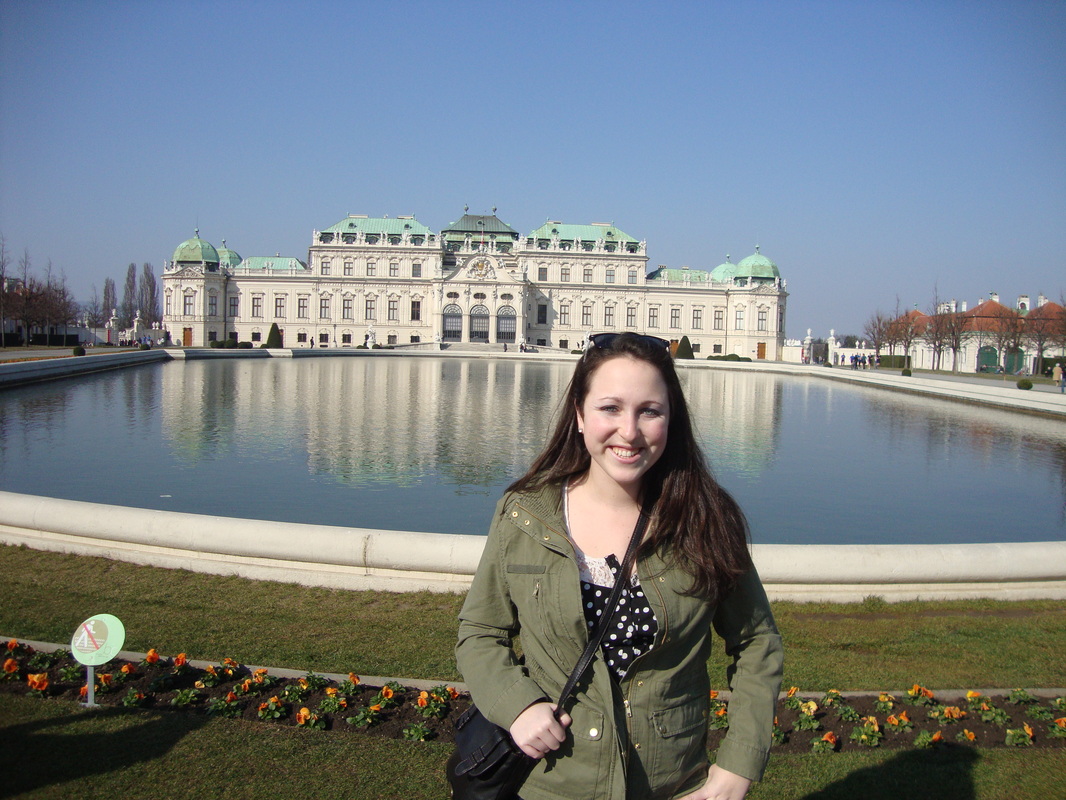
 RSS Feed
RSS Feed
